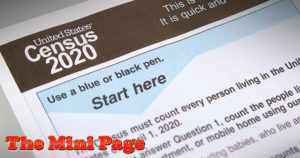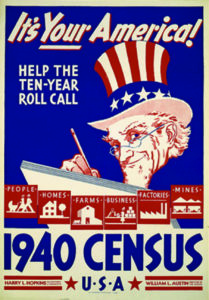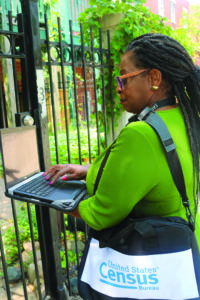
AMP | Kids is proud to partner with The Mini Page, celebrating over 50 years of providing engaging and fun learning opportunities to young readers across the country. This feature was originally syndicated in newspapers the week of March 21 – March 27, 2020. It is distributed digitally here with permission from Andrews McMeel Syndication. Enjoy and share with the young learners in your life!
Our U.S. Constitution includes a rule that every 10 years, the people of the United States must be counted. We call this a decennial (dih- SEN-ee-uhl) census.
With the results of the census, the government can decide how the 435 seats of the House of Representatives should be distributed. But we get a lot of other valuable data, or information, from census figures.
For example, these numbers help officials:
- figure out where to build schools.
- plan for new fire departments.
- decide how much government money should go to certain areas or groups of people.

A census poster from 1940.
Census history
The first census took place in 1790 and counted 3.9 million people. Today, 230 years later, the United States is home to more than 329 million people.
On the form
Questions on this year’s census form ask about the people living in a household and how they’re related to each other. For example:
- How many people were living or staying in this house, apartment or mobile home on April 1, 2020?
- How is Person 2 related to Person 1? Does this person usually live or stay somewhere else (such as at college)?
Collecting the information
 In mid-March, census forms will be mailed to all U.S. households. In places where there is no standard address, such as on some country roads or on Indian reservations, census workers will deliver the forms by hand.
In mid-March, census forms will be mailed to all U.S. households. In places where there is no standard address, such as on some country roads or on Indian reservations, census workers will deliver the forms by hand.
People can respond to the census in one of three ways: online, by phone, or by mail.
From May to July, census-takers will visit homes that haven’t responded to collect the information. Census workers will also visit homeless shelters, soup kitchens and streets to collect information about homeless Americans.
Keeping information safe
Sometimes people are afraid to share their information. Census officials said the personal information collected will not be released to the public.
For example, people who have come to the United States from other countries might not want to let the government know they’re in the U.S. But census forms will not be shared with other parts of the government.
Each person who works for the U.S. Census Bureau must take an oath, or promise, never to share any information they learn about any individual.
Take a census
You and your classmates can become enumerators (ee-NOOM-er-ay-tors), or census-takers, in your classroom. Cut out this form and make a copy for each student. When you get the completed forms back, you’ll be able to see valuable information about your class!
Question No. 1
What is your age and date of birth? _______ ______________ (example: 09)
Question No. 2
How many people live in your home? _______
Question No. 3
Do you live in a city or in the country? ______________
Question N0. 4
How many pets do you have? _______
Question No. 5
How many people in your family work outside the home? _______
Question No. 6
Will your family participate in the 2020 census? Yes _______ No _______ (check one)
Tally, or count up, your answers and do some math to get an average answer for each question.
For example, what is the average age in your classroom? _______
Resources
On the Web:
At the library:
- Everybody Counts by Scholastic and the U.S. Census Bureau
Teachers: For standards-based activities to accompany this feature, visit Andrews McMeel Syndication. And follow The Mini Page on Facebook!
